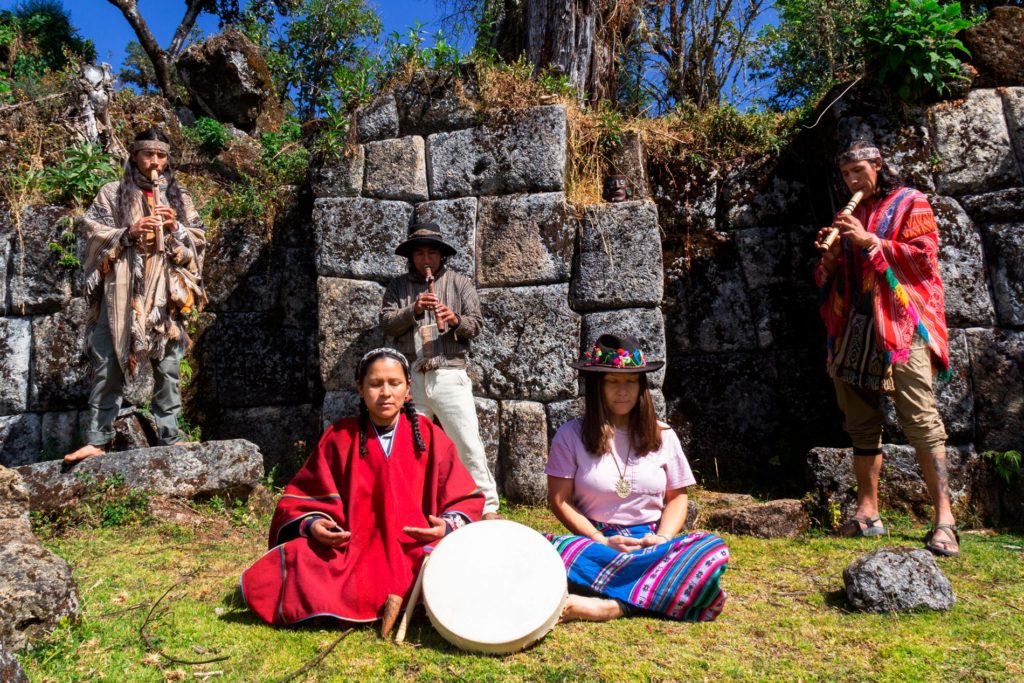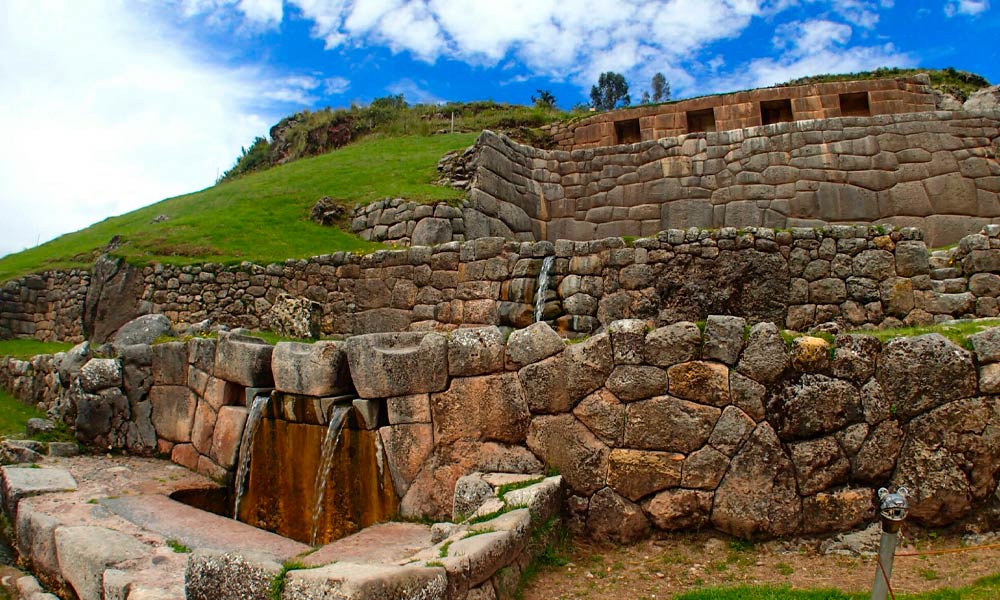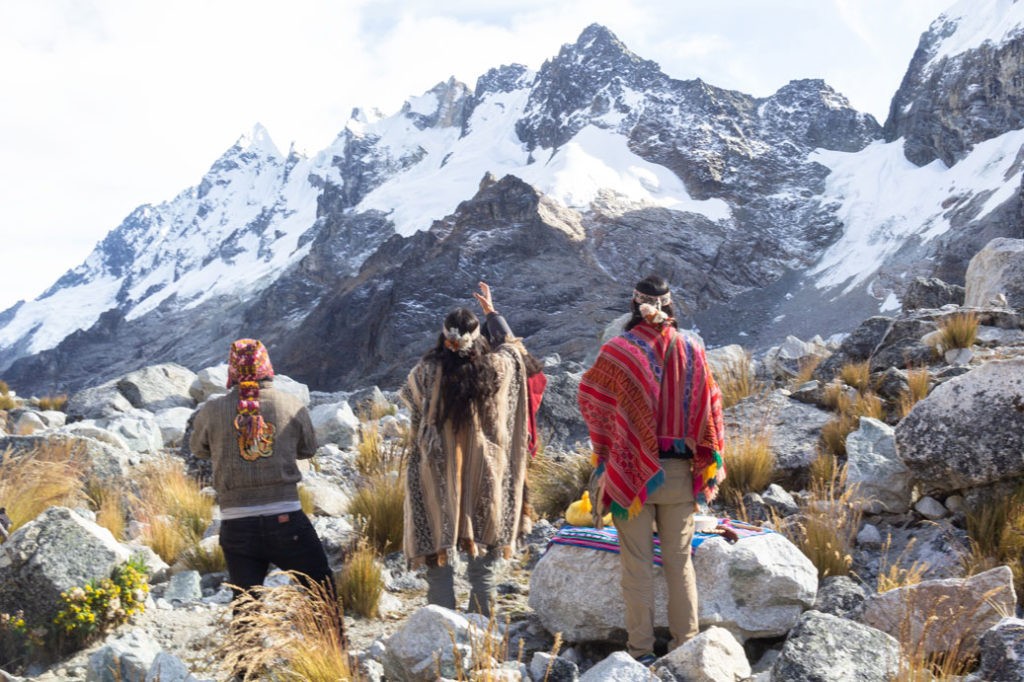Nestled within the heart of the mystical city of Cusco, Peru, resides a profound and time-honored tradition—the ancestral shamans in Ayahuasca ceremonies. These sacred rituals have endured for centuries, serving as a profound means to journey into the deepest recesses of consciousness and unlock the door to the wisdom of our ancestors. In this article, we embark on a voyage into the rich tapestry of Ayahuasca’s significance, with a particular focus on the pivotal role played by ancestral shamans. These gifted guides are the custodians of an age-old tradition, and their expert guidance is not just valuable but essential for those seeking a genuine and transformative spiritual retreat.
The Ayahuasca retreat, known locally as “La Ceremonia de Ayahuasca” is a sacred and time-honored practice that has been passed down through generations in the indigenous communities of the Amazon rainforest and the Andean highlands. It involves the preparation and consumption of a powerful plant medicine known as Ayahuasca, derived from the Banisteriopsis caapi vine and Psychotria viridis leaves, which are meticulously combined and brewed under the watchful eye of a skilled shaman.
What makes these ceremonies truly exceptional is the presence and expertise of ancestral shamans—wise individuals who have dedicated their lives to mastering the ancient art of plant medicine. These shamans, often referred to as “curanderos” or “ayahuasqueros,” have been chosen by their communities or have inherited their roles through familial lineage. They are not mere practitioners; they are the living repositories of generations’ worth of knowledge and wisdom.
The role of the ancestral shamans in Ayahuasca ceremonies is multi-faceted and profound. Firstly, they are the spiritual guardians of the space, responsible for creating a secure and sacred environment where participants can engage with Ayahuasca and experience its transformative effects safely. Their deep connection with the plant medicine and the spiritual world allows them to navigate the complex and often challenging terrain of the ceremony, ensuring that each participant is supported on their unique journey.
But the shaman’s responsibilities extend beyond physical and emotional safety. They are also conduits for spiritual insight and healing. Through their chants, called “icaros,” and their intimate relationship with the plant medicine, shamans guide participants on an inner journey that can reveal hidden aspects of the self, release emotional burdens, and offer profound insights into life’s mysteries.
Moreover, ancestral shamans possess a profound understanding of the intricate web of nature, humanity, and the cosmos. They see themselves as intermediaries between these realms, and in the altered states of consciousness induced by Ayahuasca, they can tap into this wisdom to provide guidance, clarity, and healing. It’s as if they open a doorway to the timeless wisdom of our ancestors, allowing participants to access insights and teachings that transcend the boundaries of time and space.
In the sacred context of the Ayahuasca ceremony, ancestral shamans are the linchpins that hold together the spiritual fabric of the experience. They bring the depth of tradition, the power of the plant medicine, and the wisdom of the ages into perfect harmony. Without their guidance, the ceremony would lack the transformative and healing qualities that have drawn countless seekers to this ancient practice.
The presence of ancestral shamans in Ayahuasca ceremonies is not just significant; it’s indispensable. Their expertise, spirituality, and connection to the profound traditions of the indigenous cultures are what elevate these experiences from mere psychedelic journeys to life-changing spiritual quests. They are the stewards of a sacred legacy, and through their guidance, participants can embark on a profound journey of self-discovery, inner healing, and connection to the ancient wisdom of our forebears.
1. The Sacred Medicine of Ayahuasca:

Ayahuasca, often referred to as “La Medicina” or “La Madre Ayahuasca,” is a revered and ancient Amazonian concoction meticulously crafted from a harmonious fusion of sacred plants. This extraordinary elixir is unlike any other, holding within its brew the potential to unlock the deepest realms of the human psyche and spirit. Its psycho-spiritual potency is renowned worldwide, drawing seekers from across the globe to partake in its transformative properties.
This revered medicine represents not just a concoction of plants but a bridge between the material and the metaphysical, a gateway to dimensions of consciousness that remain veiled in ordinary states of awareness. At its core, Ayahuasca is an alchemical blend of two primary components: the Banisteriopsis caapi vine, often referred to as the “vine of the soul,” and the leaves of Psychotria viridis, known as “chacruna.” The synergy between these two botanical entities is where the magic unfolds.
The Ayahuasca ceremony is not a casual or recreational endeavor; it is a deeply sacred and profoundly respectful experience that demands the presence and expertise of ancestral shamans. These spiritual guardians are the keyholders to the ceremony’s wisdom and safety. They have devoted their lives to the study and practice of this ancient art, drawing upon a lineage that extends back through countless generations.
To embark on an Ayahuasca journey is to engage in a dialogue with the very essence of existence itself. This sacred ceremony typically unfolds within the shelter of a specially designated space, often a “maloca” or ceremonial hut, where participants gather with the utmost reverence and intention. Here, under the guidance of the shaman, a sense of sacredness permeates every aspect of the ceremony, from the preparation of the brew to the chanting of icaros—sacred songs that guide the experience.
The Ayahuasca ceremony serves as a portal to the depths of one’s consciousness, a path that leads to self-discovery, profound healing, and spiritual awakening. Under the influence of this potent medicine, participants often enter a state of altered consciousness marked by heightened sensory perception, introspection, and visionary experiences. These journeys into the inner sanctum of the mind reveal insights, emotions, and memories that may have been long-buried or hidden from conscious awareness.
While the experience can be challenging and even confrontational at times, it is considered an opportunity for profound inner healing and growth. The shaman’s role is multi-faceted, as they navigate the ceremony with expert skill, guiding participants through the peaks and valleys of their inner landscapes. Through their intimate knowledge of Ayahuasca and their connection to the spiritual realm, shamans ensure that each participant is safe, supported, and empowered on their unique journey.
One of the remarkable aspects of the Ayahuasca experience is its potential to foster a deep sense of interconnectedness—with nature, with fellow participants, and with the cosmos itself. It’s as if the boundaries that define the self begin to blur, offering a glimpse into the universal tapestry of existence. This profound sense of unity and the insights gained often leave participants with a renewed perspective on life and a deeper understanding of their place in the grand scheme of things.
Ayahuasca is far more than a brew of plants; it is an ancient conduit to the mysteries of the self and the universe. Its transformative power, however, is harnessed and facilitated by the invaluable presence of ancestral shamans. These wise guardians hold the keys to unlocking the profound wisdom contained within the Ayahuasca experience, guiding participants on a journey of self-discovery, healing, and spiritual connection that transcends the boundaries of time and space.
2. The Role of Ancestral Shamans:

Ancestral shamans are the beating heart of Ayahuasca ceremonies, embodying a profound and irreplaceable role in the sacred rituals. These esteemed spiritual guides are the torchbearers of age-old wisdom and traditions, a lineage entrusted to them through countless generations. Their invaluable experience, deep-rooted knowledge, and unwavering connection with the spiritual realm (Spiritual Heritage of the Incas) converge to create an indispensable presence within the transformative tapestry of Ayahuasca ceremonies.
At the very core of their being, these shamans are stewards of a living legacy, custodians of a spiritual heritage that has weathered the test of time. Through rigorous training, often initiated during adolescence or even childhood, they acquire an intricate understanding of the botanical realm and its synergy with the human psyche. This apprenticeship is a lifelong commitment, entailing a profound connection to nature, the spirits, and the rituals that have been practiced since time immemorial.
The shaman’s role extends beyond that of a guide; they are, in essence, conduits between the physical and metaphysical realms. As participants gather within the ceremonial space, the shaman’s presence immediately establishes an atmosphere of profound reverence and intention. Their demeanor, often marked by a quiet authority and gentle compassion, invites trust and surrender among those seeking Ayahuasca’s wisdom.
The ceremony unfolds under the shaman’s expert guidance, with meticulous attention to every detail. They are the artisans behind the preparation of the Ayahuasca brew, an alchemical process where the sacred plants are transformed into a potent elixir. This brew is more than a concoction; it is the embodiment of centuries of knowledge, a vessel through which the spirit of Ayahuasca can be invoked.
Throughout the ceremony, the shaman chants icaros, sacred songs that have been handed down through generations. These melodious incantations serve as a bridge between the physical and spiritual realms, guiding participants on their inner journey. The icaros have a profound influence, shaping the trajectory of each participant’s experience and providing solace during moments of challenge or uncertainty.
One of the shaman’s most remarkable abilities is their intuitive insight into the needs of each participant. They navigate the complexities of the Ayahuasca experience with unwavering skill, offering personalized care and support. Whether it’s guiding someone through a difficult emotional release, facilitating a profound revelation, or simply holding a space of comfort, the shaman’s presence is a source of profound reassurance.
3. The Importance of Preparation and Energetic Protection:
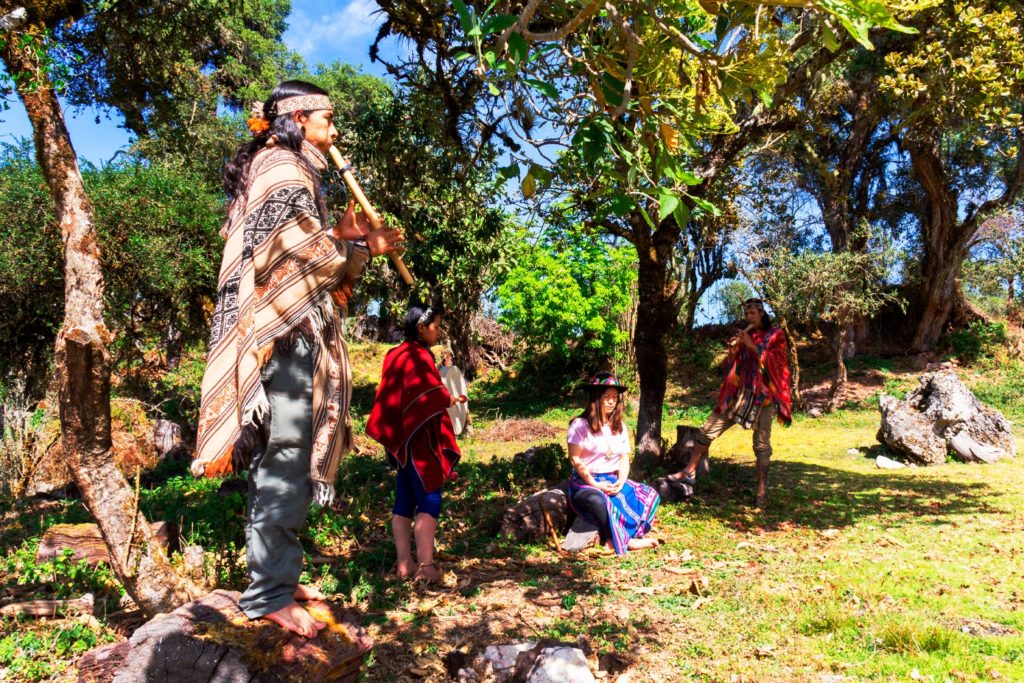
In the intricate tapestry of Ayahuasca ceremonies, the role of ancestral shamans extends far beyond the actual ingestion of the sacred brew. The journey towards a profound Ayahuasca experience begins well before the ceremony itself. Ancestral shamans carry the sacred responsibility of preparing participants on multiple levels, ensuring that they are not only physically but spiritually and energetically ready to embark on this transformative odyssey.
The preparation process is a fundamental rite of passage, one where the shaman and participant engage in a shared journey of purification and alignment. It’s a sacred dance of intention, a harmonious union of human aspiration and the healing power of nature. The shaman’s wisdom shines as they delicately assess the energetic and spiritual state of each participant, determining the best course of preparation.
Energetic cleansing is an essential step in this preparatory phase. The shaman employs a myriad of techniques drawn from the depths of ancestral knowledge, such as smudging with herbs like sage or palo santo, to purify the energetic field of participants. These cleansing rituals serve to release stagnant energies, negative emotions, and psychic clutter that might hinder the participant’s journey. It’s a profound act of purification, akin to clearing a path through a dense forest, ensuring that the healing energies of Ayahuasca can flow freely.
Ancestral shamans in ayahuasca ceremonies also initiate participants into the sacred intentions of the ceremony. These intentions serve as a compass, guiding the inner journey and focusing the healing energies towards specific areas of the participant’s life or psyche that require attention and transformation. This step is a crucial part of the preparatory process, as it aligns the participant’s conscious and subconscious minds with the healing potential of Ayahuasca.
4. Guidance and Containment during the Ceremony:
Within the sacred cocoon of the Ayahuasca ceremony, ancestral shamans assume the roles of spiritual navigators and compassionate guardians. Their presence transcends the physical, extending into the realms of the spiritual, emotional, and psychological. As participants sip the sacred brew and embark on their profound inner odyssey, the shamans stand as pillars of unwavering support, drawing from their profound connection to the sacred medicine and their deep understanding of the human psyche.
One of the most vital roles of these shamans during the ceremony is that of the emotional anchor. Ayahuasca journeys are intensely personal and can elicit a wide range of emotions, from elation to sorrow, from fear to profound bliss. Ancestral shamans, having witnessed countless such journeys, are adept at recognizing the ebbs and flows of the emotional landscape. They approach each participant with an open heart and a profound sense of empathy, offering a reassuring presence that soothes frayed nerves and comforts restless souls.
When participants encounter challenging emotions or face the depths of their fears, ancestral shamans are there to guide them through the turbulent waters of the experience. With a gentle touch, a calming word, or a carefully chosen icaro (sacred song), they provide a lifeline to those in need, helping them navigate the inner tempests that may arise. It’s a dance of empathy and wisdom, where the shaman’s deep connection to Ayahuasca serves as a beacon of light, illuminating the path towards healing and understanding.
5. Integration and Post-Ceremony Support:
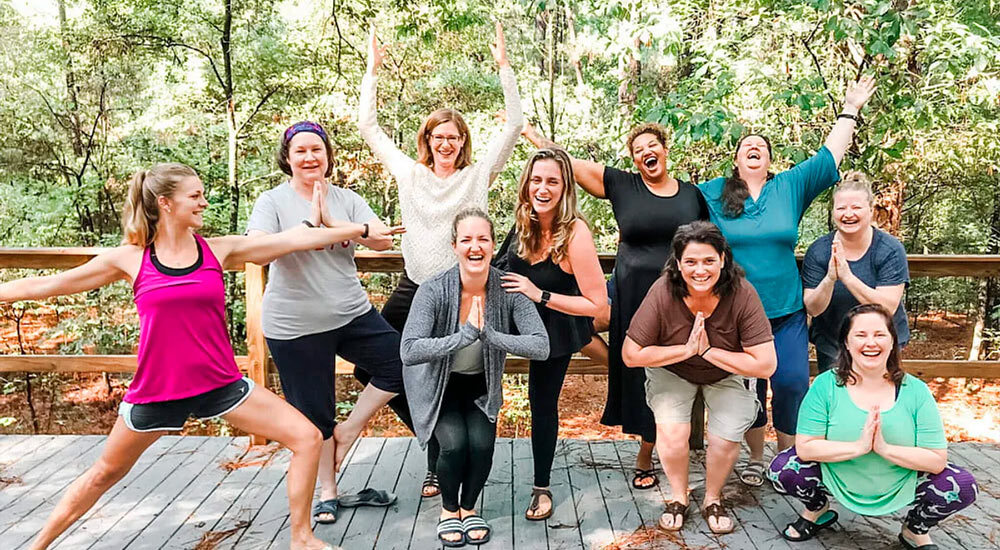
Beyond the boundaries of the Ayahuasca ceremony, the invaluable guidance of ancestral shamans extends into the post-ceremonial phase, known as integration. This period is as crucial as the ceremony itself, for it is during integration that the seeds sown in the depths of the Ayahuasca experience take root and begin to flourish in the soil of everyday life.
Ancestral shamans in ayahuasca ceremonies, drawing from their reservoir of wisdom and spiritual knowledge, step into the role of mentors during this phase. They recognize that the transformative power of Ayahuasca lies not only in the visions and revelations experienced during the ceremony but in the way those insights are integrated into one’s existence. With this in mind, shamans offer a steady hand to guide participants as they navigate the terrain of post-ceremonial existence.
One of the primary functions of shamans during integration is to share teachings and spiritual practices that assist participants in the assimilation of their Ayahuasca experiences. These teachings often revolve around fundamental spiritual principles, such as the interconnectedness of all life, the importance of living in harmony with nature, and the pursuit of inner peace and balance. By imparting these age-old insights, shamans help participants bridge the gap between the mystical and the mundane, enabling them to translate their Ayahuasca-inspired revelations into actionable wisdom.
Ayahuasca ceremonies in Cusco are much more than individual experiences. They are a journey to one’s essence, ancestral wisdom, and connection with the divine. The guidance of ancestral shamans is vital in ensuring a proper and transformative spiritual retreat. Their presence, knowledge, and energetic protection create an environment conducive for participants to explore their inner selves, heal emotions, and connect with the sacred. If you seek a profound and authentic spiritual experience, Ayahuasca ceremonies in Cusco are a gateway to ancestral wisdom and personal transformation. Trust in the ancestral shamans and allow yourself to be guided on this journey towards expanded consciousness and connection with your true self.

